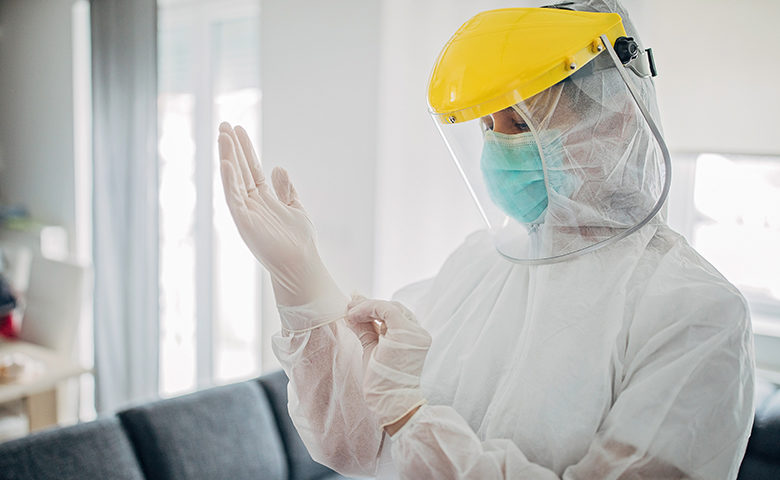As COVID-19 spreads globally, so does the scarcity of critical medical supplies, particularly ‘personal protective equipment (PPE). A crucial component in dealing with any highly infectious disease. Current medical demand far outnumbers supply. The further disruption was caused by bans on PPE exports imposed by supplier countries and the subsequent increase in PPE Industry prices. Buy from genuine PPE distributors to avoid any fake products.
Countries seek domestic opportunities to meet their PPE needs by retooling production lines and re-shoring local supply chains. The World Health Organization has issued a warning that rising demand, panic buying, hoarding, and misuse of personal protective equipment (PPE) are putting lives at risk from the new coronavirus and other infectious diseases.
Due to limited access to supplies such as gloves, medical masks, respirators, goggles, face shields, gowns, and aprons. To doctors, nurses, and other frontline workers are dangerously ill-equipped to care for COVID-19 patients. Gloves, masks, eye protection gear, and body protection suits are examples of PPE products, as are disease testing kits, hand sanitizers, body bags, and chlorine tablets.
With an adequate supply of PPE, the number of infections among the essential healthcare workers on the frontlines of society’s crisis response, who bear the brunt of any shortage, can be more easily controlled. However, PPE supply chains are in disarray after the major PPE distributors or supplier countries imposed export bans to address domestic needs. Crucial inputs such as the three-ply linen required to make surgical masks.
Countries have imposed export restrictions on gloves, face shields, and protective clothing. These restrictions have caused a six-fold increase in the price of surgical masks.
What exactly does PPE stand for?
Clothing, equipment, and other garments designed to protect the wearer’s body from hazards such as injury, infection, and chemical exposure are examples of personal protective equipment (PPE). PPE is used in medical and scientific fields and various manufacturing industries.
Personal protective equipment, or PPE, is a term that is used during an infectious disease or pandemic. Personal protective equipment is a type of medical device. It includes gloves, facemasks, protective clothing, goggles, helmets, respirators, and other equipment to protect the wearer from infection. PPE is used in the healthcare industry, particularly in clinics, labs, and hospitals.
This equipment kit acts as a barrier between the infectious material and the user’s skin, mouth, nose, or eyes, preventing contaminants from being transmitted.
Cause of the global PPE shortage
Six months into the coronavirus crisis, the United States and several other countries are suffering from a PPE shortage. COVID- 19 cases have been reported across the country, with many medical experts fearing the second wave in the fall, and with the new cases comes an increase in demand for personal protective equipment (PPE). In Texas, one PPE donation organization saw an 11,000 percent increase in PPE requests.
Nurses are reusing single-use masks, some resorting to using trash bags as gowns. In addition to posing a direct threat to clinicians, the shortage of personal protective equipment (PPE) poses an indirect threat to the rest of us by increasing the risk of transmission between healthcare workers and the general public.
Transforming adversity into an opportunity
Countries learned from the SARS and MERS epidemics that advanced planning can be critical in demonstrating national resilience. They prepared for future diseases by stockpiling PPE and developing domestic PPE manufacturing capabilities. Hospitals were outfitted with dedicated infection control units, and regulatory systems allow for the rapid approval of testing kits, which were plentiful.
Other communities have adapted and overcome PPE challenges by developing new elastomeric masks to serve as backup for N95 respirators, and using 3D printing capabilities to produce face shields and masks. Countries can set their innovative path on a national and societal scale by bootstrapping domestic manufacturing of PPE using approaches like these.
What can you do to assist?
Don’t hoard PPE for your personal use if you want to help end the global PPE crisis. General-purpose masks are inexpensive and effortless to make with materials you probably already have lying around your house. Donate surgical masks and N95 respirators to your local hospital and first responders. Furthermore, you can reduce the need for PPE by taking reasonable steps to slow the spread of COVID-19. The major market players focus on scientific and technological advancements to improve personal protective equipment manufacturing procedures.
Companies have created designs that consider worker comfort and allow for greater freedom of movement and the most dependable safety protective equipment. You can contact medical gown distributors for a genuine buy. This company has also developed advanced new eye protection solutions, such as anti-fog technology, which is beneficial to laborers who require a clear vision.
Conclusion: Masks should be used as part of a comprehensive measure to reduce transmission and save lives. Wearing a mask alone will not provide adequate protection against COVID-19. Contact PPE manufacturing companies in the USA to buy accordingly for use. Stay safe if COVID-19 is spreading in your community by taking simple precautions like physical separation, wearing a mask, keeping rooms well ventilated, avoiding crowds, cleaning your hands, and coughing into a bent elbow or tissue. Examine local advice in the area where you live and work.
Frequently Asked Question
Q1.How do manufacturers ensure the safety of personal protective equipment (PPE)?
Manufacturers follow regulations and practices to maintain consistent product quality and to guide performance testing.
Q2.Will personal protective equipment keep me safe from a specific disease?
PPE forms a non-disease-specific barrier to the penetration of substances, solid, liquid, or airborne particles.
Q3.Should caregivers use personal protective equipment (PPE)?
A health care provider may advise caregivers to use PPE when caring for a sick person at home.
